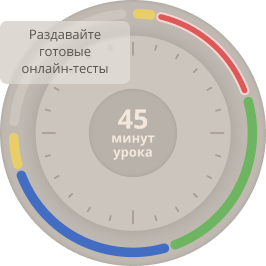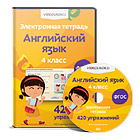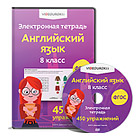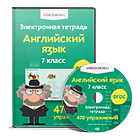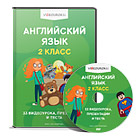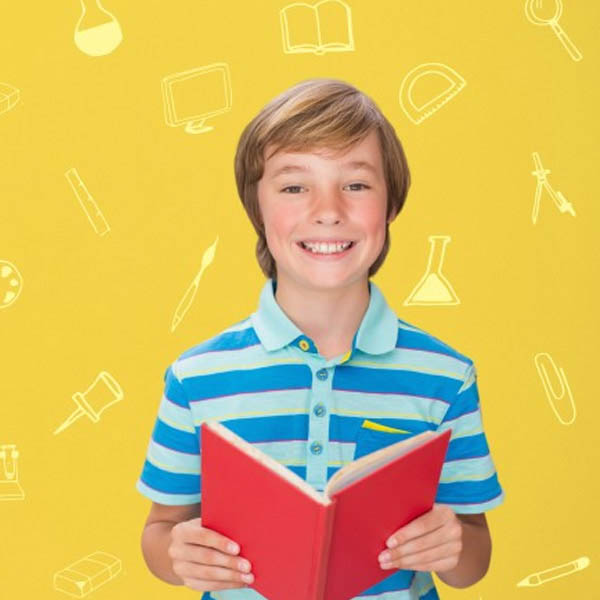I Variant
Match speakers 1-6 with statements A-G. Use statement only once; there is one you do not need to use
A The speaker’s job is to repair electronic equipment.
B The speaker thinks technology is advancing too quickly.
C The speaker is disappointed with a new gadget.
D The speaker is impressed with a new gadget.
E The speaker uses technology at work.
F The speaker had a technological problem.
G The speaker is considering buying a new gadget.
| Speaker 1 | Speaker 2 | Speaker 3 | Speaker 4 | Speaker 5 | Speaker 6 |
|
|
|
|
|
|
|
Read the text and choose the right option to complete the sentence
Life full of Robots
Pr. Hiroshi Ishiguro is one of the top 100 geniuses alive in the world today, who has devoted himself to creating humanlike robots. “In the future, our lives will be full of robots,” he says.
The professor compared the evolution of robots to the evolution of cars. “Once we have developed practical robots, we can spend more and more time building autonomy,” he said.
Androids which look just like you can conduct your business, attend conferences, and go shopping, while you sit in the comfort of your home. A camera will monitor your expressions. Ishiguro says there is even a psychological phenomenon: if someone touches your android, you feel it. “It’s a very tactile sensation,” he says. Some time ago Ishiguro left his twin android to give prerecorded lectures at Osaka University in Japan, while he went overseas. He also – when invited for two conferences – emailed the conference organizers to say that he would have to send his android to one of the events. Both conferences replied: “We want the android!”
Ishiguro has developed androids that look and feel just like humans – with very realistic skin, hair and facial and body movements. In one experiment, an android was made to read the evening news. “No one could tell the difference,” says Ishiguro. “That means we don’t need newscasters – just androids.” The question is – what does it mean to be human? Is it important for the robots to look like humans? Prof. Ishiguro was also asked a question about the threat that robots may take over people. Ishiguro said that the western world’s fear of robots, as shown in movies such as The Terminator, was foreign to the Japanese, who saw robots as friendly.
Robots that the Japanese genius created look like ________.
cars b) instruments c) people
Practical robots give us more _________.
money b) free time c) tasks
A camera inside robots helps them to imitate people’s ________.
actions b) behavior c) looks
Psychologically people who have robots begin to _______ them.
a) depend on b) be connected with c) dislike
The Japanese professor used a robot himself to ________ instead of him.
a) do the shopping b) work in the laboratory c) lecture
The conference organisers who invited the Japanese professor _______ the twin robot.
a) didn’t recognise b) preferred c) didn’t like
The scientists worked out a robot that ________ like people.
a) has feelings b) sings songs c) studies
Unlike Europeans and Americans Japanese people believe that robots _______.
a) can change the world
b) are helpful and kind to people
c) will rule the world
III. Fill in the gaps transforming capitalised words
Peter the Great is probably the most (1. FAME) of all the Russian tsars. Under his rule, Russia changed from being a poor farming society into an empire as strong as other (2. EUROPE) powers. Peter toured Europe and learned about (3. WEST) culture and science. Returning to Russia, he made changes to his army and (4. GOVERN) to make Russia more like Europe, especially Germany. He founded St Petersburg, his most lasting (5. CONTRIBUTE) to Russia. A gateway to Europe, St Petersburg became the new capital of his (6. KING).
Choose the correct item
You are really late! I … for you for over an hour!
have waited b) was waiting c) have been waiting
Unless you … me what’s wrong. I can’t help you.
a) don’t tell b) tell c) ‘ll tell
She said she … away the following weekend.
a) was going to be b) had been c) will be
Marco wants to improve his listening skills in English, so he watches English films without …. .
a) subtitles b) scripts c) headings
Peter feels very strongly … protecting wildlife that is under threat.
a) for b) about c) of
Do you know who …. the MP3 player?
a) discovered b) revealed c) invented
The ground was covered … fallen leaves.
a) of b) by c) with
Today is a public holyday, so Jane … go to school.
a) mustn’t b) doesn’t have to c) may not
Now that Samantha’s lost all that weight, she’s giving all her old clothes … to her friends.
a) away b) up c) out
If I had known you were coming, I … something for dinner.
a) would have cooked b) would cook c) had cooked
II Variant
Match speakers 1-6 with statements A-G. Use statement only once; there is one you do not need to use
A The speaker is impressed with a new gadget.
B The speaker thinks technology is advancing too quickly.
C The speaker’s job is to repair electronic equipment.
D. The speaker had a technological problem.
E The speaker uses technology at work.
F The speaker is considering buying a new gadget.
G The speaker is disappointed with a new gadget.
| Speaker 1 | Speaker 2 | Speaker 3 | Speaker 4 | Speaker 5 | Speaker 6 |
|
|
|
|
|
|
|
Read the text and choose the right option to complete the sentence
A Robot with feelings is star of Science Museum show
Scientists have developed a robot that can react emotionally to the way people treat him, relaxing when it feels kindness and showing fear and anger. Heart Robot has a beating heart, a breathing belly and sensors that react to movement, noise and touch. If you hug him he will melt in emotions. If you give him a violent shake or shout at him he will get upset. His eyes will become wide, his heart will beat quickly.
The scientists at the University of the West of England in Bristol designed Heart Robot to study how people react to a machine that shows feelings. The robot is the size of a small child. He’s half robot, half puppet. You move him around by hand, but he shows emotions. Different children react differently. Some want to hug and cuddle him, and look after him like a doll or a baby; others want to scare him. The idea of robots having emotions or a personality is no longer just science fiction.
1. Heart Robot is called so because ________.
a) he reacts emotionally
b) he has a battery like a heart
c) his heart really beats
2. Heart Robots is _________ when somebody shouts at him.
a) pleased b) displeased c) indifferent
3. Heart Robot reacts to ________.
a) his name b) a song c) a hug
4. His heart beats quickly and his eyes look bigger when he is ________.
a) frightened b) happy c) interested in something
5. Heart Robot is designed by _______ scientists.
a) Japanese b) American c) British
6. The scientists designed Heart Robot to ________.
a) make a new toy b) analyze people’s reaction c) make a film
7. Heart Robot shows emotions but he can’t ______.
a) move himself b) help about the house c) hug children
8. Hear Robot proves that emotional robots have become ________/
a) part of science fiction
b) a reality
c) film character
Fill in the gaps transforming capitalised words
The clothes we choose to wear tell other people a lot about us. We often judge people by clothes they are wearing. For example, people dressed in (1.EXPENSE) clothes are thought to be (2.WEALTH). Our clothes create an (3.IMPRESS) of our personality. Similarly, our (4. CHOOSE) of clothes also depends on our age and who we are influence by. On the other hand, we don’t always have the chance to choose our clothes. If we work as a nurse or a police officer, we have to wear a standard uniform. Lastly, of ideas of (5.BEAUTIFUL) are revealed by our style of dress. Dressing in particular clothes may be a way of saying. “This is what I think is nice, and I believe it makes me look more (6.ATTRACT)”.
Choose the correct item
Mark …at a company for seven years before he started his own business.
a) has been working b) was working c) had been working
Can you, please, look … my plants while I’m away?
a) after b) out c) up
If John doesn’t come home soon, he … the start of the film.
a) would miss b) misses c) will miss
Our hotel room had an amazing … of the snowy mountains.
a) scenery b) view c) setting
Tonya was making a salad …. her sister was laying the table.
a) until b) while c) after
Everyone was surprised to see Samuel turn … at Lynn’s party.
a) with b) down c) up
Tracy … buying products that come in too much plastic.
a) refuses b) avoids c) rejects
You … see a dentist about that toothache of yours.
a) should b) better c) ought
What makes Mary a great writer is the fact that she’s very … .
a) ambitious b) outgoing c) imaginative
Amanda asked Nick where … his camcorder from?
a) he had bought b) did he buy c) had he bought
Спецификация контрольных измерительных материалов
для проведения промежуточной аттестации по английскому языку в 10 классах
Цель контроля: установление уровня усвоения знаний по английскому языку в соответствии с требованиями к базовой подготовке учащихся
Форма контроля: тест в формате ЕГЭ
Количество вариантов: 2
Время выполнения работы: 45 мин
Содержание и структура работы: работа состоит из 4 заданий
Письменная работа проводится с целью контроля у учащихся:
- лексико-грамматических умений и навыков; навыков аудирования
- комплексного умения читать текст с полным пониманием содержания прочитанного.
Всего заданий в каждом варианте – 30, в том числе:
| С кратким ответом | 6 |
| С развернутым ответом | 0 |
| С выбором ответа | 24 |
Максимальное количество баллов в работе: 30
За верное выполнение каждого задания с выбором ответа и с кратким ответом обучающийся получает 1 балл. Если в кратком ответе сделана орфографическая ошибка, ответ считается неверным. За неверный ответ или отсутствие ответа выставляется 0 баллов.
| Номер задания | Код элемента содержания | Контролируемые элементы содержания | Проверяемые виды деятельности (требования) |
| 1-6 |
| Аудирование с целью понимания основной информации | установление соответствия между утверждениями и высказываниями говорящих |
| 7 - 14 |
| Чтение с целью извлечения запрашиваемой информации
| Закончить фразы в соответствии с содержанием текста |
| 15 - 20 |
| Словообразование при помощи суффиксации | восстановление пропущенного слова в связном тексте |
| 16 - 21 |
| Лексико-грамматический тест на знание изученных видо-временных форм глагола, фразовых глаголов, лексических единиц | решение теста с выбором правильного ответа из 3 предложенных |
Шкала оценивания:
| Оценка | «5» | «4» | «3» | «2» |
| Кол-во баллов | 30-28 | 27-21 | 20-14 | 13 и менее |


